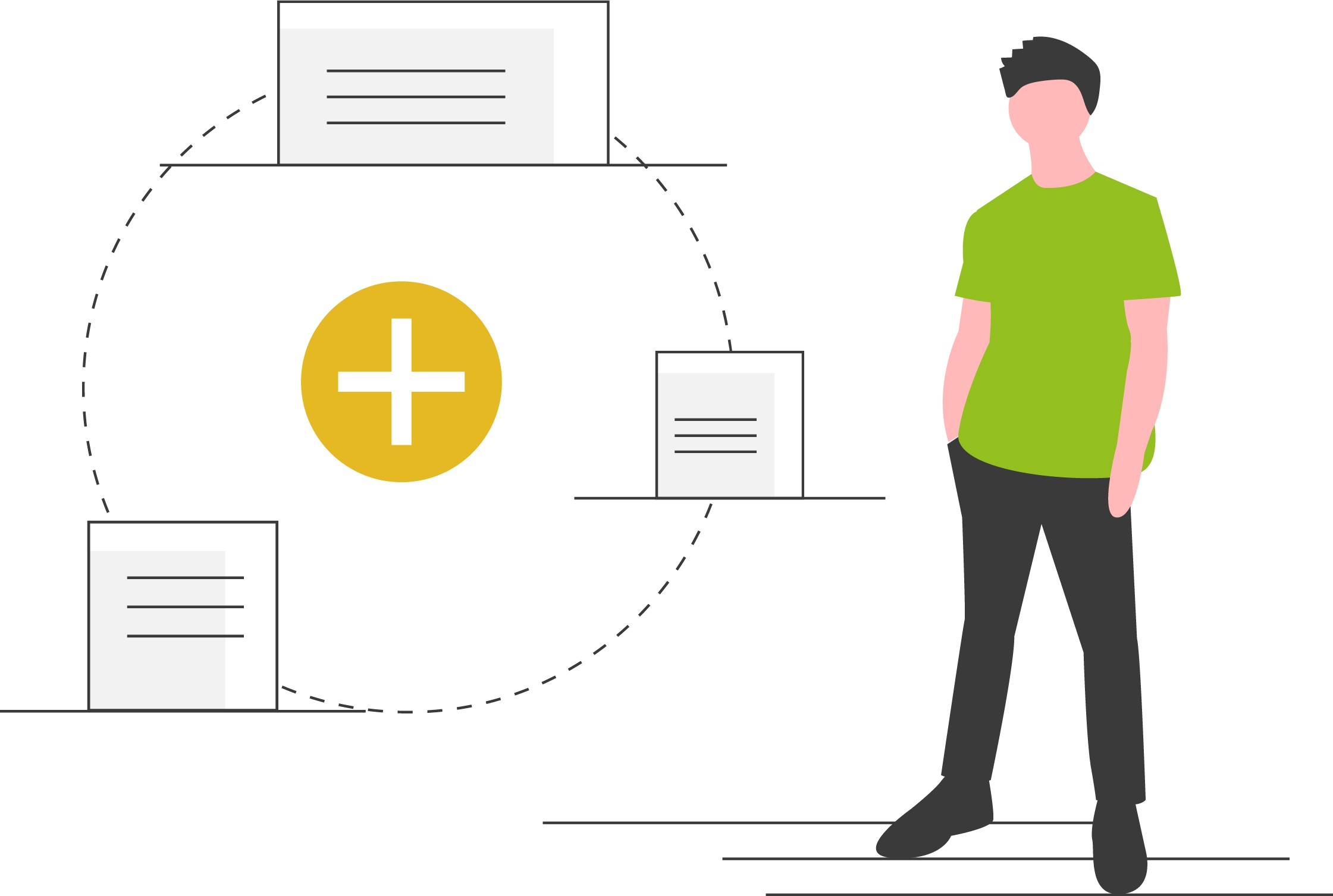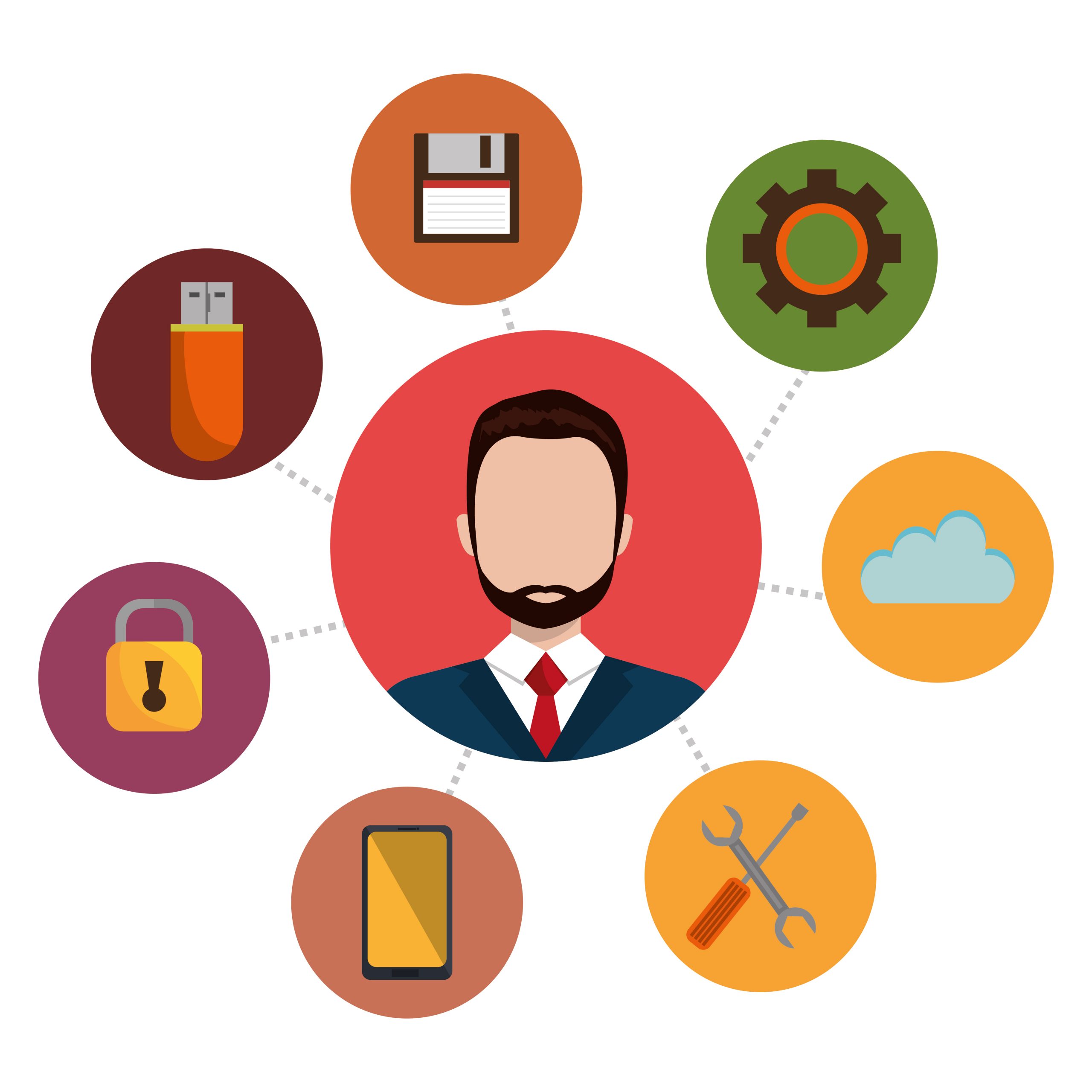02 Mar

- 1. Creating a Vision for Customer Success
- 2.Consistent Customer Service Should be Top Priority
- 3. Identifying & Prioritizing Customer Touch Points
- 4. Creating a Customer Self-Service Strategy
- 5. Customer Service KPIs & Metrics
- 6. Build a driven Customer Service Team
- 7. Exceptional Customer Service Should be Rewarded
- 8. Build a Customer Service Toolkit
- 9. Empowering Your Customer Support Team
- 10. Collecting Feedback Regularly
- Customer Satisfaction (CSAT)
- Net Promoter Score (NPS)
- Customer Effort Score (CES)
- Conclusion
In the last blog piece, we comprehensively covered what customer service strategy is and why it is important for any business.
Now the question is how do you start on building a customer service strategy?
This can be a new domain for you, even if you happen to own a business this is why we are here to help.
In this blog, I will tell you 10 steps that you need to take to create a kickass customer service strategy, and how to ensure that it is serving the purpose it was designed for.
1. Creating a Vision for Customer Success
The first and foremost thing that you need to do when building a customer service strategy is deciding what defines good customer service for your business.
This is also known as your vision of customer service or success.

How to create a Customer Success Vision?
This is relatively simple to create.
All you need to do is place yourself in the shoes of your potential customers or clients, and then decide on what would you expect if you were them.
And look for the answers to these questions;
- How do you expect to be greeted?
- How do you wish to be educated and assisted along your customer journey?
- What forms of communication are you most comfortable with?
- What sort of information you are looking for before, during and post point of sale?
These are some, but not all the considerations you should have in mind when building a vision for your customer service strategy.
This exercise will:
- Help you build a wish list you think a conscientious and caring company would incorporate in their customer service strategy.
- It helps in ensuring that customers are treated fairly and equally.
- A vision that is in line with the goal to deliver great customer service.
While creating the vision;
- You might come across some discrepancies in the current and suggested plan of action that needs adjustments.
- You may have to bend some aspects and company work processes in place.
But the vision should exhibit a behaviour that is dictated by the needs and wants of the consumer.
2.Consistent Customer Service Should be Top Priority
This is perhaps the most underrated customer service practice; therefore, it requires some explanation.
What is Consistency in Customer Service?
Consistency in customer service is the art of delivering the same quality of experience people receive via one or any other channel they interact with.
Keeping the customer service consistent across all touchpoints is equally important.
This is so important that 75% of customers expect consistent customer experience across all channels and 73% of switch brands if they don’t get it.
How to deliver and ensure Consistent Customer Service?
Typically, regardless of the size and type of business, it can achieve consistency in customer service by
A – Centralized Customer History – Customers hate it when they are being asked the same question repeatedly.
Having a centralized customer history will help your customer support staff to know:
- When did this customer last interact?
- What was the issue they had?
- Active / Inactive Status, Billing and purchase history
- Any other useful history of the customer.
B – Common Communication Messages – Ensure that the message, offer, or anything should be consistent no matter which channel they communicate from.
For example, it’s not wise to offer special discounts (mainly via automated messages) to people interacting via Facebook Messenger but not to people directly calling you or sending support emails.
C – Consistent Routing – If it takes 10 minutes to listen & respond to support queries then why should it take 24 hours to get a support email reply?
It is fine to quickly respond to customer support calls (mostly because you are obliged to not hang-up) but the email or any other channel response should match the same or equal consistency.
3. Identifying & Prioritizing Customer Touch Points

The journey of identifying all customer touchpoints (Omnichannel) is also known as customer journey mapping.
When you look for touchpoints that your customers have, you tend to learn more about them and it helps you correctly catering to their needs and deliver the services they want through each touchpoint.
If you successfully identify all touchpoints, you will be able to better understand customers, which will allow continuous improvements in order to keep them happy.
Let’s look into some of the ways you can easily identify customer touchpoints.
A – Identify current & missing touchpoints
Here you can list down different touchpoints (Omni-channel) that your current strategy is providing & lacking.
B – Survey your customers
Examine the circumstances around each touchpoint (Omni-channel) by surveying your customers. Ask them how they came into contact with your business and what affects their purchasing decisions.
C – Find out where the value is
The best way to find the most value is through existing touchpoints & survey data and then you can highlight your most valuable touchpoints.
You should look into those touchpoints, which are producing the most ROI and where the customers are making their purchasing decisions.
But you should also look for channels that are most used but under-resourced. For example, your customer might be calling you a lot but you don’t have enough agents to answer the calls.
4. Creating a Customer Self-Service Strategy
Most modern customers are tech-savvy and prefer to look around for a solution to their problem before contacting your support.
Your self-service strategy should be a valuable resource for customers and it must cover most issues that the customers face.
This way, customers will solve their problems on their own instead of going through the hassle of calling customer service every time they face an issue.
You can improve the customer self-service strategy through:
A – Updated FAQ & Support Articles
From a simple FAQ to common questions to in-depth support articles around complicated tasks, your support content should be updated and relevant.
Keep this section updated for new issues or better solutions for existing queries.
A large input on constant improvement will come directly from your agents, which will encounter new issues or lacking in the existing support documentation.
B – Tutorial Videos
Some customers prefer viewing step by step videos over articles.
Helpful videos go a long way in ensuring customer satisfaction.
With videos available on your website, customers can solve issues on their own just by following the steps in the video.
But similar to textual content, you need the visual content to be updated.
5. Customer Service KPIs & Metrics
Customer Service KPIs or metrics are defined as the parameters that are used by customer service teams to track, visualize, analyze, and optimize customer relations.
Customer service metrics provide you with:
- 360-degree view of the customer service that your business is delivering
- Help in identifying how your customer service team is performing
- Measuring customer satisfaction across multiple touch-point
- Most importantly, it will also help you in managing the customer service team more efficiently, by increasing job satisfaction and potentially reducing the cost.
If your customer service strategy happens to have a clear set of customer service KPIs, there would be no problem in measuring the current performance versus the set goals.
But customer service is hard, and measuring the value of good customer service is even harder.
This is why you need to make sure that you have the right KPIs in your customer service strategy to get quality benchmarks and filter out inefficiencies.
We will cover more on measuring customer service quality and metrics in the last section.
6. Build a driven Customer Service Team
Training your team holds equal importance in customer service strategy as hiring the right employees.
From hiring empathetic persons to training them across your product/service and systems is essential before they start answering queries.
At a bare-minimum the training should:
- Deep product/service knowledge
- The company and more specifically the Customer Success Vision
- Explain and exhibit them on tackling every possible scenario
- Training across all key support channels and systems
But bear in mind that staff training is not a one-off practice.
The expectations of the customers change over time, and so will your customer service strategy.
To cope up;
- Your customer service training protocols have to be reviewed & revised
- You should also set training targets for teams, which might include new courses, shadowing opportunities, modules, and refresher pieces of training on the stuff they already know.
7. Exceptional Customer Service Should be Rewarded
Your team might be aware of what great customer service looks like, but your team might not be putting efforts to deliver the best.
This is why you need to give them a reason to stay motivated and always give their best.
You should always work towards motivating your team to go the extra mile, which will help your business achieve its customer service milestones and deliver on the overall customer service strategy.
The best Customer Success Leadership:
- Recognize the efforts of the customer support team
- Incentivize the delivery of customer service, by creating a reward system for the team.
- Share their success stories with the organization, and value their work.
By doing this you will be able to ignite a spark of delivering fantastic customer service and will help them in feeling valued.
8. Build a Customer Service Toolkit
Customer service strategies have evolved from a sympathetic ear at the end of a telephone call to a complete solution, which attempts to match experience and knowledge with a particular problem to address.
An organized customer service plan aims to remove the possibility of going without response, deliver an appropriate solution, and achieve the best possible standards for customer care strategy.
In order to do so, you can take the aid of tools that businesses can use to enhance their customer service strategies.
Besides the standard telephone & email systems, there are two essential tools that should be part of any customer service toolkit.
A – Customer Service Software
Customer service software will help you retain the most important parts of your business, i.e. your customers.
Typically, a customer support software provides:
- Omni-channel integration to cover all customer touchpoints
- Ticketing system through which customers can create and agents can respond on support tickets
- Customer management to view and manage all support history of a customer
B – Chatbots
Second, in line are the chatbots.
Chatbots can help in improving customer service by increasing brand engagement.
They help businesses with:
- Boosting engagement by providing users with a quick response.
- Reduces customer frustration as their queries are being answered in real-time
- Saving money on agents by providing canned/automated response to frequent questions
C – Customer Experience Software
Customer Experience software is a tool that allows you to manage interactions that a customer has with your business.
The technology works with all customer-facing touchpoints by organizing, automating and synchronizing them so that you can service all your existing customers, and respond quickly to rising customer churn rate.
Pro Tip: GrowHawk is a customer engagement platform, that allows you to hear what your customers are saying and react immediately to drive engagement and create loyal, raving customers. It uses Net Promoter Score and AI algorithms to create more engaged client bases for businesses – driving both client retention and active referrals.
9. Empowering Your Customer Support Team
Empowering your customer service team means that you are giving them authority, ideal systems, the right technology, and free to deliver excellent customer experience.
By empowering customer support teams they will have:
- Complete freedom and knowledge to entertain queries raised by the customer independently.
- The luxury to perform better as a team, and deliver superior customer service and business success.
- Feeling of being valued, as the company’s vision and employee’s opinion will be interlinked with each other.
- Increased motivation and enhanced morale ultimately lead to improved customer service.
Empowering your customer care team can lead to improving customer service by giving them the power and trust to make needed improvements while waiting in the queue for approval.
Most importantly, it encourages your team to align their priorities with the goals of the customer service strategy.
10. Collecting Feedback Regularly
Customer feedback is the information you receive after the purchase is made.
It can tell you whether customers are satisfied or dissatisfied with the product or service that you are offering.
And ultimately, it defines the effectiveness of your customer service operations as a whole.
It is important to have regular feedback from customers in order to:
- Measure customer satisfaction broadly
- Identify any issues that customers are having and try to improve it.
- Your customer service strategies are also influenced by feedback and you can make better strategies in order to resolve possible concerns.
How to collect customer feedback?
There are several ways to take feedback:
Unprompted feedback – the comments that customers post online about your product or service.
Surveys – collect data from customers through survey tools.
Either way, you will get an idea of what your customers think about the product or service being offered and your actions can be adjusted to their needs in the customer service strategy.
Measuring Customer Service Success
Framing and establishing your customer service strategy is not where your work ends.
You will have to make sure that is serving the purpose it was designed for.
To make your strategy successful you need to quantify the specifics it has.
The most common way to approach this is by developing customer service metrics.
Customer relationships have evolved, and this is why they have their own key performance indicators (KPIs).
What once was considered cost drivers (customer service and support) are now viewed as revenue generators.
The reason being customer service now calls for intense focus and attention to make the customer journey a pleasant experience.
Customer Satisfaction (CSAT)
What is CSAT?
CSAT is the acronym for Customer Satisfaction, it is a commonly used key performance indicator to measure how satisfied customers are with your business.

Source: DataPine
Generally, customers are requested to rate their experience on a scale of 1-5 from Very Satisfied (rating 5) to Very Dissatisfied (rating 1).
How to calculate CSAT?
You can calculate CSAT using the formula;
CSAT = Number of satisfied customers (4 and 5) / Number of survey responses) x 100
Net Promoter Score (NPS)
What is NPS?
NPS is a metric that is most commonly used in customer experience programs.
Net Promoter Score is often considered to be a gold standard customer experience metric.
The scores from NPS are usually measured using a single question survey, the higher the scores the more desirable the service is.

Customers are categorized as promoters, passives, and detractors.
This will help you get a clear picture of loyalty.
How to calculate NPS?
You can calculate NPS using the formula:
NPS = Percentage of Detractors – the percentage of Promoters
For example, if 10% of respondents are Detractors and 70% are Promoters, your NPS score would be 70-10 = 60.
Customer Effort Score (CES)
What is the Customer Effort Score?
Customer Effort Score is a metric (single-item) that is used to measure the level of effort a customer puts in to get the prevailing issue resolved.
The easier it is for customers to get their problems sorted out, the more loyal they are to the brand.

The ideal practice is to reduce customer effort, which will help in creating a better customer experience for your customers.
As compared to NPS, CES is determined by asking relatively simple questions, i.e. “How easy was it to get your issue resolved?”
The scale ranges from 1 (Very Difficult) to 7 (Very Easy).
Higher scores mean, your customers put in minimal effort to reach their solution, and they will be highly satisfied with your customer service.
How to calculate CES?
There is no complicated formula for calculating CES, however, you can calculate CES by taking the average of the scores.
CES = Sum of all scores / total number of respondents
Conclusion
When it comes to extraordinary customer service, there is no one size fits all approach.
But fortunately, there is one surefire way to devise customer service strategy that makes your customers feel that you have got their back.
In order to achieve this, remember:
- To instill the focus on customer service throughout the company and employees
- To map out all aspects of the customer journey so that you can level up every possible touchpoint
- To set up meaningful KPIs and goals for the customer service team
- To provide your team with the right tool and authority to serve customers the right way
- To collect the feedback and implement relevant changes
So what do you think of this framework?
Comment below and let us know.








